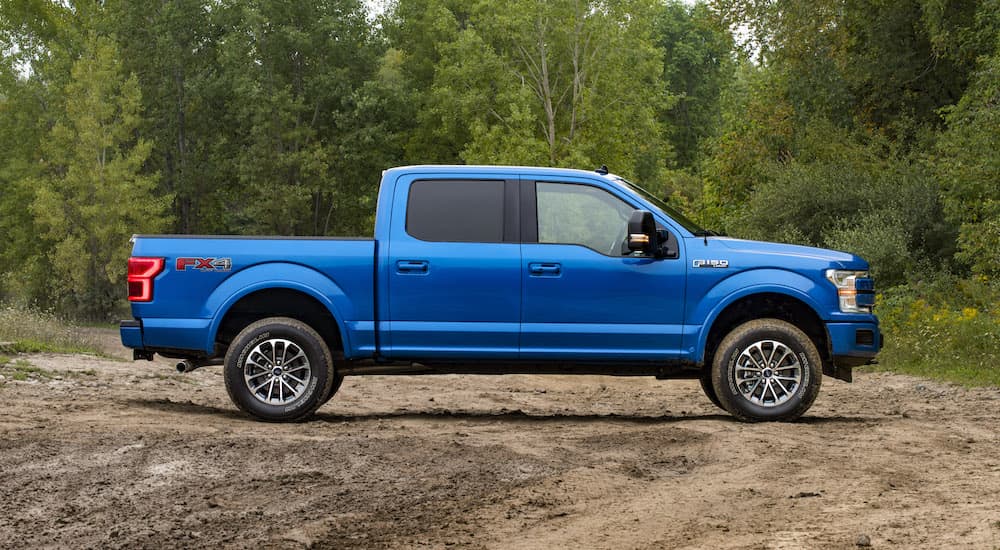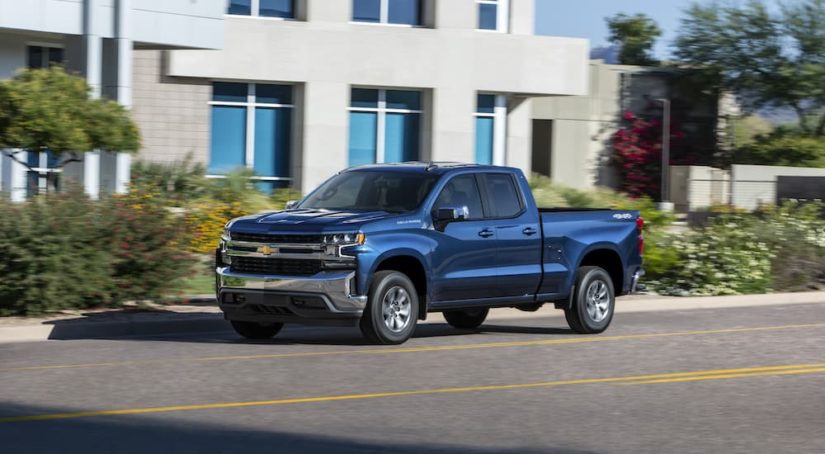Is it time to take your business on the road, or do you need to update your current fleet? Searching for work trucks for sale is a great way to accomplish either task and grow your business. But how do you know you’re getting a great deal on a fleet vehicle? That’s a question that every business owner asks because, as most already know, every penny saved is a penny that can be reinvested in your business, team, and vision for the future.
Shopping for a fleet vehicle is an excellent way to invest in your business because it allows you to reach more customers, improve responsiveness and efficiency, and expand your service area. However, finding the right fleet vehicle can be daunting because there are so many options and upfits available. To help mitigate this overwhelm, here are a few tips to jumpstart your search for work trucks for sale, starting with finding the right dealer for your fleet needs.
#1 – Find the Right Dealer
Finding the perfect fleet vehicle for your business doesn’t begin with the vehicle itself but with selecting the right dealership. What do we mean? Not all dealerships are equipped to handle fleet or commercial sales, so it’s essential to find a dealership with a dedicated fleet department. Many automakers have special certifications for fleet dealerships, like GM’s Business Elite Dealers or Ford’s Commercial Vehicle Centers, giving you an excellent place to start.
A dedicated fleet dealer knows the ins and outs of their commercial lineup and its applications to various businesses. They’ll take time to learn more about your business and transportation needs, accounting for the size of your team and the type of services you provide to help narrow your search and select the best options. This expertise allows fleet dealerships to save you valuable time and minimize stress because, unlike retail sales, they have more ability to negotiate a competitive price and have expert knowledge of their inventory and upfits.
#2 – Cheaper Doesn’t Always Mean Saving Money
Who doesn’t want to save money? Business owners know that any money they save on their fleet can be reinvested in their team and business. However, this can come at a considerable cost. How so?
A fleet truck that’s under budget and saves you thousands of dollars might initially look like your best option. But that doesn’t help if it isn’t suited for your business. An underpowered truck can’t efficiently haul the equipment you need to serve your customers, and a vehicle that is too small won’t have room for all of your team members in the cab. This could force you to use two trucks for one job, burning more fuel and wasting valuable time.
Cheaper doesn’t always mean saving money, especially regarding a fleet vehicle. It’s vital to consider the demands of your business and how you meet those demands with your team, services, and equipment. Your fleet vehicle should effortlessly meet your needs, whether you require an extended cab truck with higher payload and tow ratings or a cargo van outfitted with shelving to store tools and gear.

#3 – Take a Test Drive
Test drives are just as critical for commercial customers as they are for retail customers. Depending on the type of fleet vehicle, you can test drive your options long before you make your final decision. For example, if you’re looking for a work truck like the Chevrolet Silverado, you can test drive the newest Silverado on the retail lot to get a feel for its performance and capability. You can do the same with models like the F-150 or even reach out to the fleet team and test drive fleet-specific models like cargo vans.
#4 – Know Where to Start Negotiations
Drivers usually start negotiations based on the manufacturer’s suggested retail price or MSRP, which is posted on the vehicle’s window sticker. However, fleet customers should take a different approach and focus on the invoice price. The invoice price is how much the manufacturer, such as GMC, Ford, or Chevrolet, charges the dealership for the vehicle. In other words, it’s how much the dealership pays for the model before selling it to you.
Dealerships have to make a profit (it’s how they do business), but that doesn’t mean you can’t negotiate a price lower than what’s on the invoice. You can start negotiations based on the invoice price, adding a reasonable markup to cover the dealerships’ investment and profit. This helps you avoid overpaying for the vehicle and works to ensure everyone––you and the dealership––are happy with the final price.
#5 – Minimize Added Fees
If you’ve ever purchased a vehicle, you know that dealerships often add dealer fees. These fees are designed to cover the cost of completing the paperwork and getting the vehicle ready for delivery. But, realistically, it’s another area where the dealership can earn a profit. As you negotiate the final purchase price of the vehicle, consider the dealer fees. Some dealerships may waive these fees without your having to ask, while others know it’s another point of negotiation. In any instance, don’t be afraid to ask if the dealership will waive the fee.
#6 – Ask for a Fleet Account
Depending on the size of your business, it may be beneficial to apply for a fleet account. Many dealerships and manufacturers reward companies that have multiple vehicles in their fleet. For example, a business that purchases a specific number of fleet vehicles may be able to apply for a fleet account that simplifies their future purchases and rewards their loyalty to the dealership or manufacturer. In addition, having a fleet account can give you access to numerous discounts that will save you significant money on each vehicle purchased.

#7 – Consider Your Trade-Ins
In many instances, customers start with their trade-in and want to know the value of their trade and how it will impact their purchase. However, we recommend finalizing the sale of your commercial fleet before dealing with your trade-in. Why?
Let’s say you have $35,000 to spend on a fleet vehicle without considering your trade. You negotiate based on the invoice price, finalizing the sale at $30,000 or $5,000 under budget. This $5,000 is money you can reinvest in your business and doesn’t include the value of your trade. As a result, you’re not only saving money, but you can afford to keep your older model in service if needed.
Finalizing the purchase price first also keeps the sale straightforward. For example, you know you’re paying $30,000 for the vehicle, which is an excellent deal based on your research. However, negotiating your trade with the initial purchase makes it unclear what you’re paying for the new fleet vehicle, adding confusion to the sale. In the end, you’re uncertain if the purchase or trade-in was fair. This uncertainty can be detrimental to your business’s financial future, especially if you realize you overpaid or accepted less than the fair market value for your trade.
Shop Smarter for Your Business
As you can see, there are many ways to find the right work vehicle for your business needs; however, doing so starts with finding a reputable dealership with a dedicated fleet department. When making a significant purchase like a fleet vehicle, you need a team as invested in your business as you are. As a business owner, you wear many hats and deserve a team that works just as hard as you do to ensure your business thrives today, tomorrow, and every day after.



